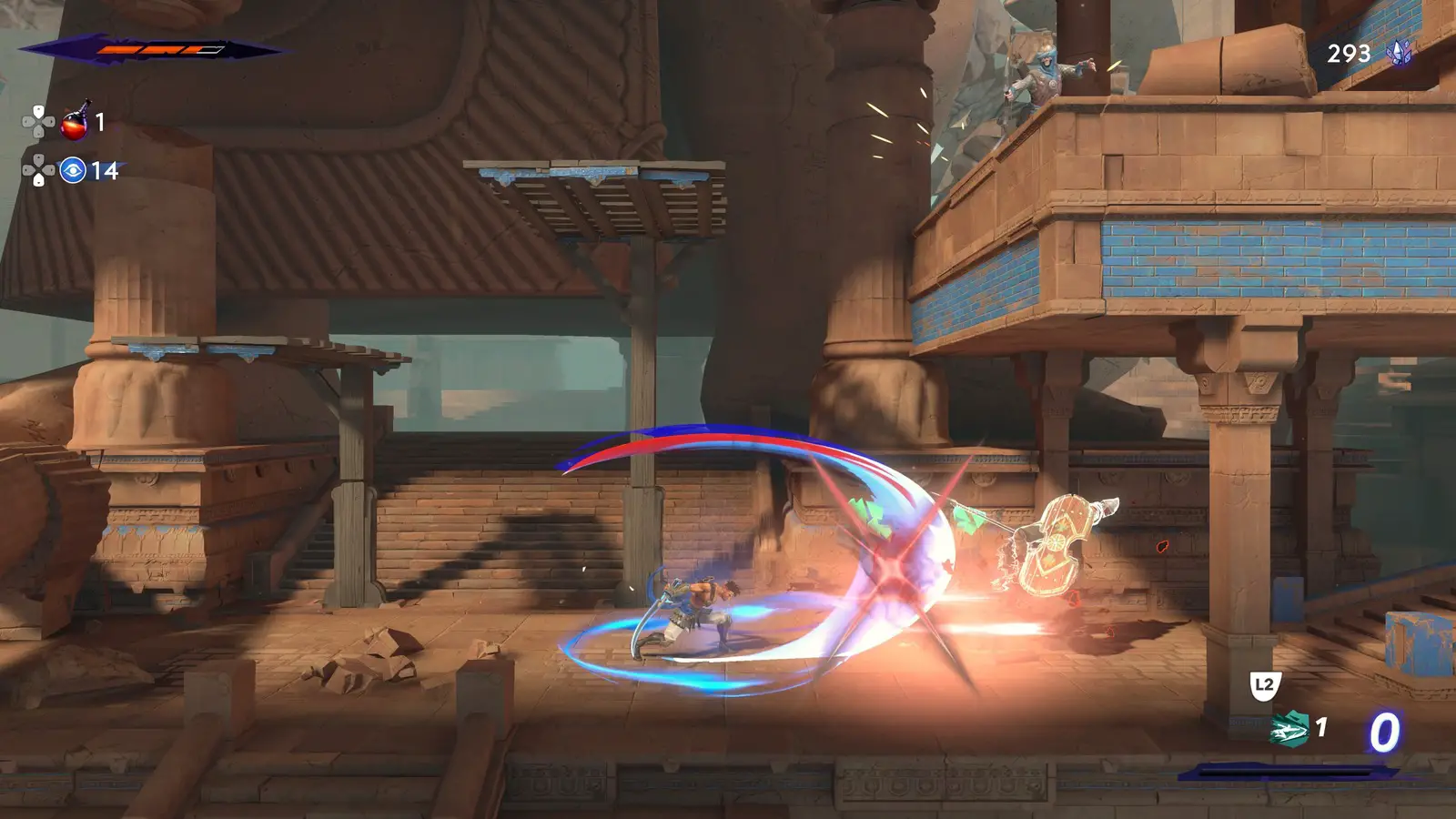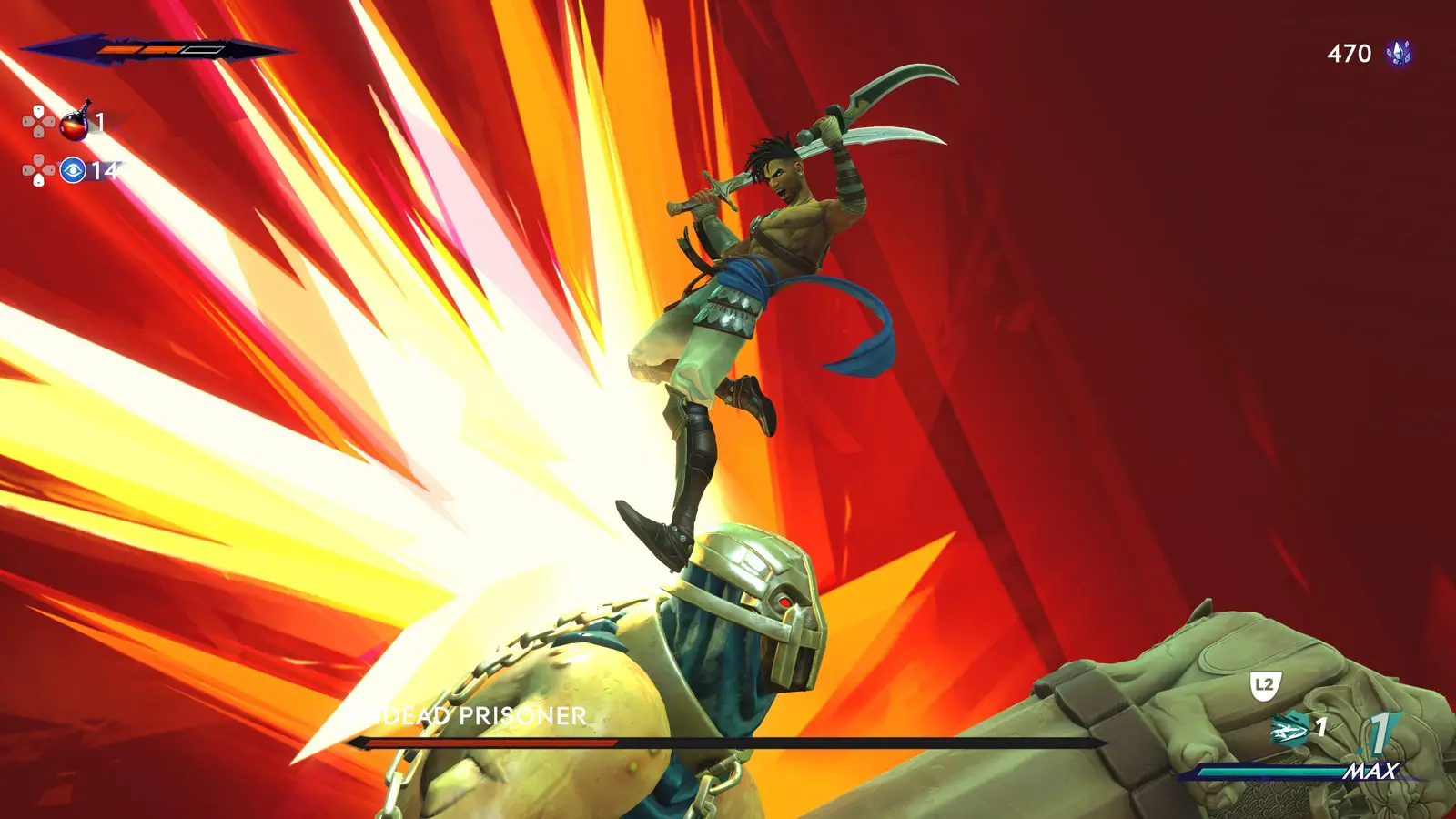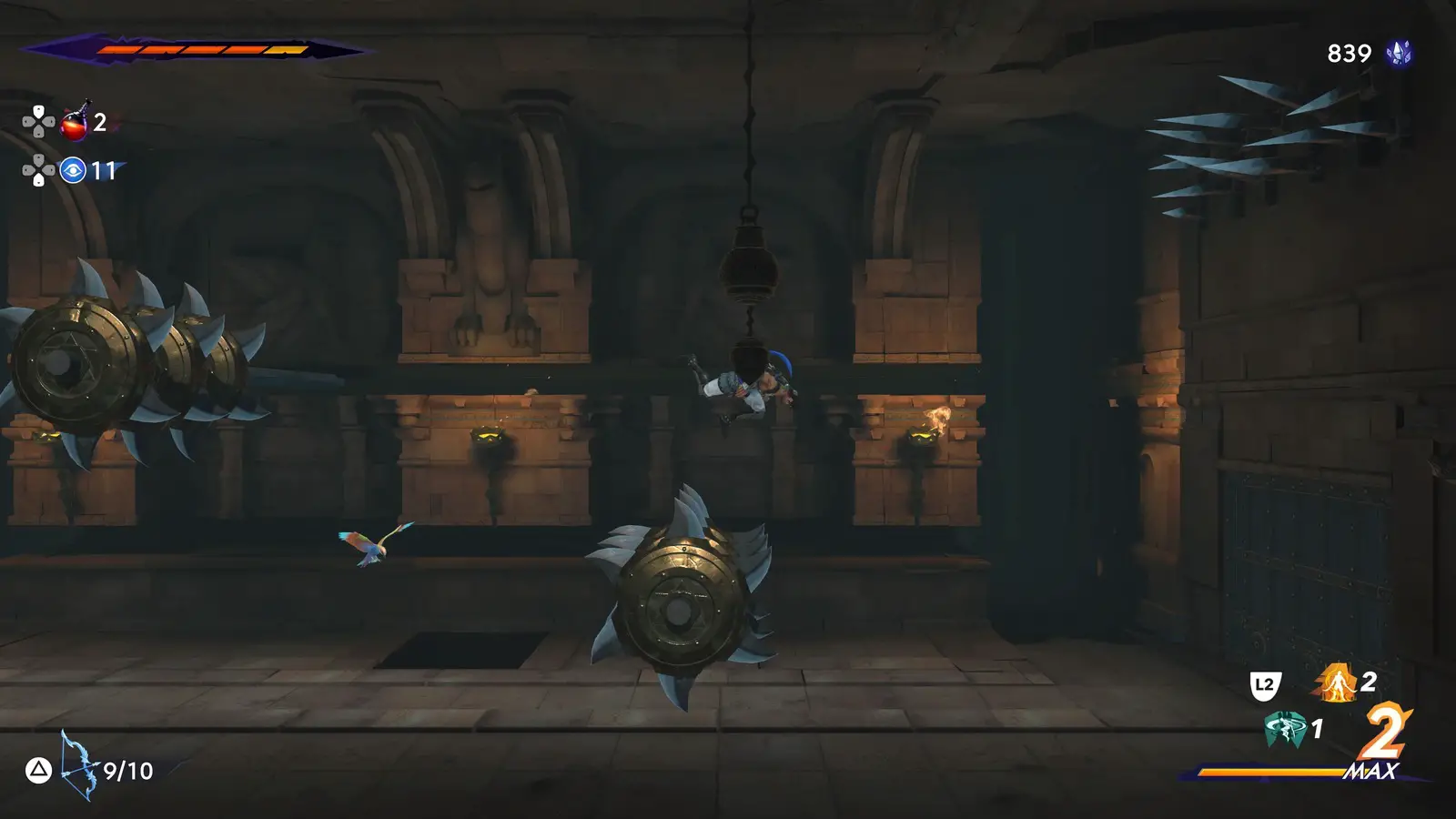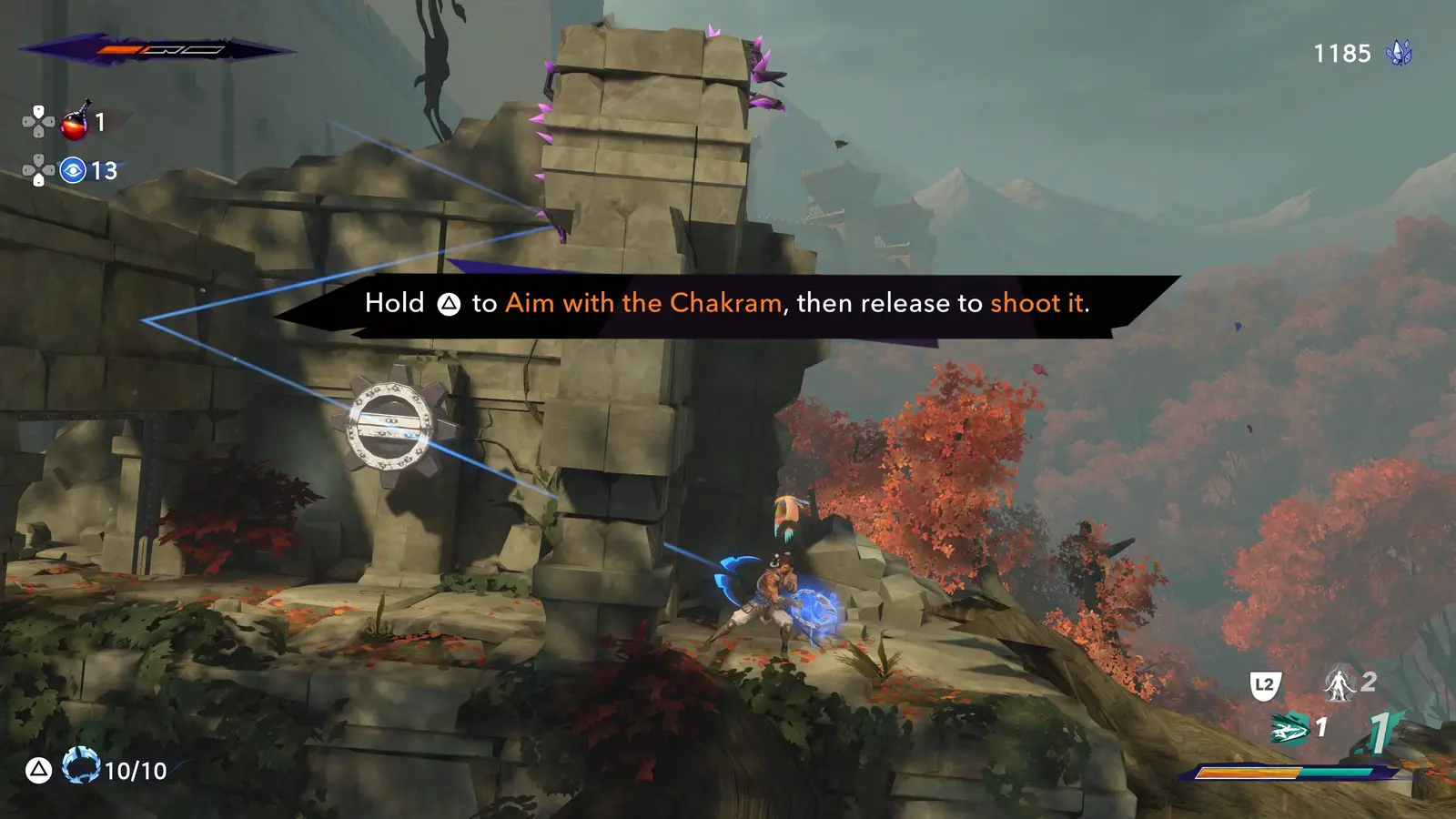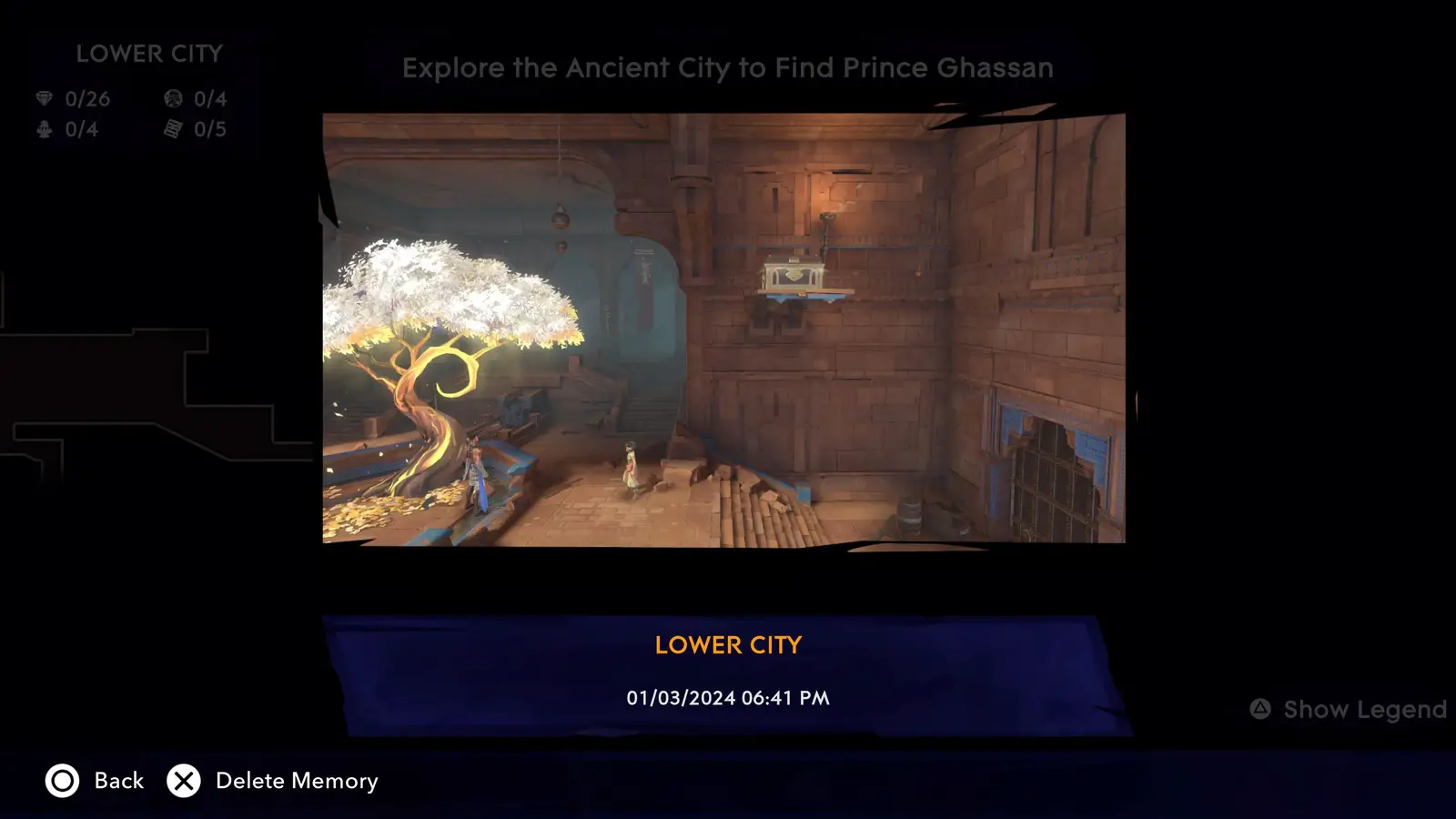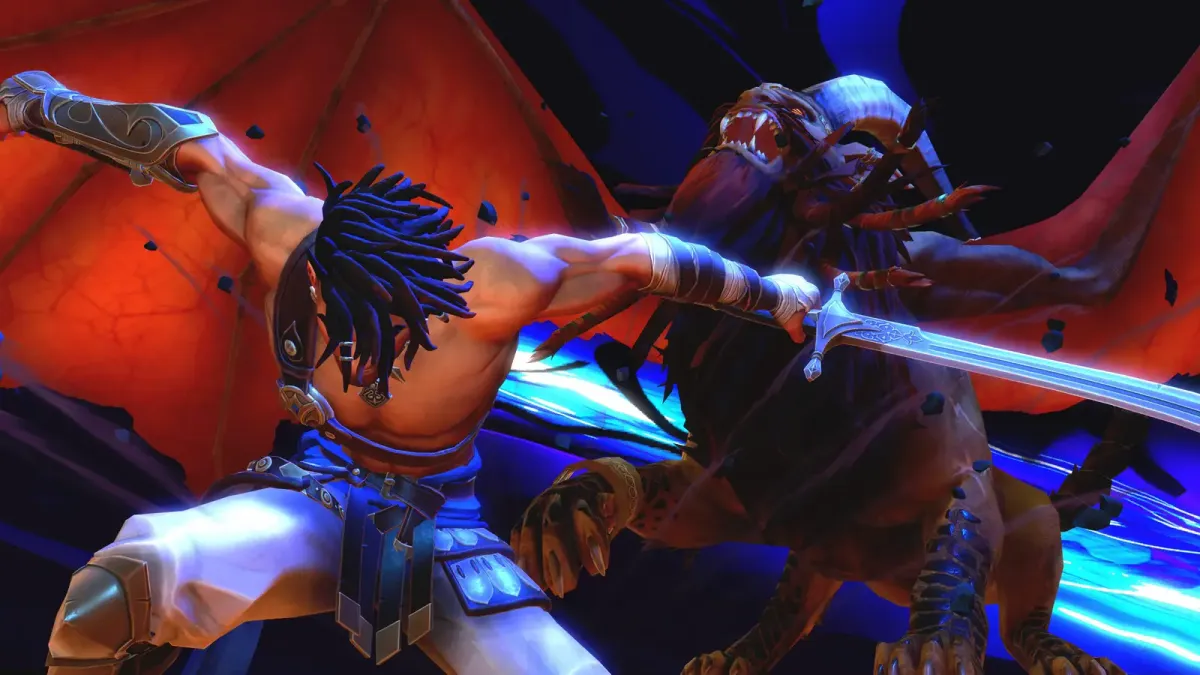
Prince of Persia: The Lost Crown hails from a long lineage of elegance. Although the details of its form shifts among the sands of time, Prince of Persia consistently holds the shape of a prince deftly and elegantly navigating gauntlets of hazards. As the latest successor to the crown, The Lost Crown follows in the footsteps of its platforming predecessors only to then gracefully leap into new directions. The Lost Crown occasionally stumbles upon its landings, it’s still a prince rather than a king after all, but it always recovers quickly. That fortitude allows the risks it takes to bloom into a compelling heir to elegance.
Leaps play a vital role in differentiating the Lost Crown not only from prior Prince of Persia games, but its contemporaries as well. One glance at the game will likely look familiar even if you’ve never moonlighted as Persian royalty before. The Lost Crown follows the exploration-based design template of games like Metroid, providing you with a large map to explore that gradually opens up as you obtain new abilities. This familiar structure translates the strengths of the series to a new format. For the Lost Crown, it’s not about the familiar elements so much as the leaps it takes past the familiar.
When you play as many of these Metroidvanian search-action explore-em-ups as I do, you begin to notice some potential pitfalls to the concept. The latent appeal of these kinds of games lies in discovering the unknown. New levels, areas, and especially powers propel you forward to the next room. To even qualify as this specific genre of game, however, it must follow a specific formula, which is counterintuitive. Any knowledge of the formula limits the discovery a player can experience. If you stick too closely to formulaic upgrades or challenges, it can be hard to justify playing something new over replaying an old favorite.
If there’s one thing that Prince of Persia excels in, it’s avoiding pits, particularly ones with existentially deadly spikes in them, so naturally The Lost Crown skillfully leaps over these concerns.
Combat distinguishes The Lost Crown immediately. More and more games in the Exploretroid genre, including Metroid itself, seem to be upping the action lately. Few go as far as The Lost Crown does. It bolsters its particular art of war with flourishes like combo systems, parries, and meter-bound super moves. Skillful play allows you to juggle enemies into the air or drag them across the screen with finesse. Combining your basic abilities with the powers you obtain opens just as many doors for combat as it does ones blocking your path. Your tools give you a lot of freedom to make stylish combos reminiscent of games more traditionally focused on fighting.
That said, caution often plays a more vital role than creativity. Most enemies won’t let you knock them around like ragdolls. In fact, many will punish you for even trying. If you carelessly toss out attacks, enemies can eviscerate you in seconds even on the standard difficulty. Your basic three-hit combo will quickly introduce you to the concept – it always ends on an attack that will briefly leave you unable to parry attacks or move out of harm’s way. This peril only becomes more prevalent the fancier you try to make your combos. Some enemy types incentivize you to try particular moves to leave them defenseless, but even that doesn’t work smoothly in multi-enemy fights that can leave you just as open as a mistimed parry or combo-ender.
Boss fights often pull the focus furthest away from freeform combat into a more calculated, responsive affair. Many fearsome beasts and giant monsters stand in your way, and you’ll often be their ragdoll instead of the other way around. These fights push your mastery of the dodging and parrying systems to their limits while rewarding you handsomely for pulling them off. Not only will a well-timed parry help you avoid damage, they also lead to flashy cinematic sequences that shave off the boss’s health. The presentation of these sequences is great – the best ones feel ripped straight from a battle manga.
In both their mechanical tests and in their presentation, the bosses are a highlight. They just also happen to highlight that the focused tests of the defensive mechanics drive the game better than the free-flowing offensive ones.
Although the ambition behind the flexible combat system is admirable, I preferred to fight with structure and efficiency overall. Foregoing the fancy combos allows you to avoid committing too heavily to your assault so that you can weave between enemies easily. It’s less flashy but gets the job done, which fits the exploration-based structure of the game. In a game like this I always want to move onto the next thing. Extended combat sequences risk bogging down the flow. The clear tests of skill that the more powerful foes offer justify prolonged interruptions much better than knocking around helpless fodder.
Thankfully the game controls with a notable slickness no matter how deeply you choose to engage with the combat, which becomes especially important to the other major pillar of the gameplay: the platforming. Prince of Persia originally stood out due to its relatively realistic depiction of movement and parkour. The Lost Crown supercharges those acrobatics into a faster-paced yet responsive platformer that constantly hurls you in and out of danger.
Although you will often hop across uneventful terrain on your journey, the meat of the platforming lies in dedicated trap rooms. Areas like these are filled to brim with pointy objects that you need to nimbly navigate your way through. This is a game where simply jumping, sliding, and propelling off of walls feels good, so successfully maneuvering through a field of obstacles simply adds an additional element of satisfaction on top.
The vast majority of these sections are fun to perform and utilize your powers in interesting ways, like timing arrow shots between jumps or timing warps to solve navigational puzzles. Working out the “puzzle” of particular sections can be just as fun as the execution. The creativity on display is great, although sometimes the amount of finger work you have to do can get excessive. By the end game, some sections will be asking you to use nearly every button on the controller in close proximity, which convolutes things to an unnecessary degree. Clicking in the analog stick for tightly crafted platforming just doesn’t feel natural.
Occasionally, some sections cross a line from challenging to tedious. I admit that it’s a subjective line to draw in the sands of time – one Prince of Persia’s time-waster is another prince’s treasure, after all. Still, sequences that ask you to wait for slowly moving platforms or obstacles, or ones that drag on for minutes at a time without a checkpoint or reprieve can grate if you need to try them multiple times. When these parts combine with some awkward camera views, contain cheap twists that give you little time to react, or require some awkward hand placement, that’s when I start to get fed up.
Virtually all of the parts that I’d describe like this are optional; I can’t help but be disappointed by them anyway. Much of the fun of these Action-Searcher games comes from filling out the map and completing every challenge. This game is one of the few examples where I actively gave up on that goal – not because I felt like I couldn’t complete a section, but because I wasn’t getting anything out of the challenges they represent and didn’t find the trouble worth it. I suppose that partly boils down to the rewards. Alternate skins or currency for upgrades rarely feel worth the effort. Ideally, the challenges should be enjoyable on their own merits. The fact that they aren’t always strikes me as the real problem.
I broke the combat and platforming down into different sections because that fits how the game structures itself. The Lost Crown technically mixes both of these elements into a giant interconnected map to explore. In reality, it rarely blends the platforming and combat together. Instead, you’ll often encounter a room that dedicates itself to combat and a room that dedicates itself to platforming. This method seems strange yet allows both tentpoles of the gameplay to shine in their ideal environments. Rooms that do try to combine platforming and enemies come across like unwanted annoyances. At the very least I don’t want archers with the world’s best aim constantly knocking me off of platforms.
Sections like these highlight some of the quirks of the controls, like how your character occasionally “sticks” to the direction he’s facing even when you jump in a different direction. You need to be facing the direction of the attack to parry it, but this can be surprisingly hard to keep track of with the zoomed out perspective. It’s something you don’t necessarily notice until the exact scenario where it becomes a problem, and there are many “little things” like this in the game that the disparate design philosophies bring to light. I much prefer the focused, uninterrupted platforming treks and the one-on-one fights with giant enemies on flat terrain – those are the game’s best moments. Its attempts at blending them unfortunately could use some work.
Even if the split is ultimately for the best, it results in an eclectic map to explore. Exploravania maps are interconnected beasts meant to be hiked back and forth through multiple times. Contrary to the individual strengths of the combat or platforming, that means that ideally neither element should have too strong of a presence. That’s why for many Searchtroids, I’d recommend them for the experience taken as a whole rather than the platforming or combat individually.
In The Lost Crown, I recommend it for the inverse. Individually completing the combat and platforming challenges is a great time. When you do them multiple times, especially in close proximity to each other as you search out secrets, their impact dilutes. Some Metroid-likes dull the pain of repetitive expeditions across well-trodden ground with frequent warps and fast travel points. Some fast travel options exist here, but they are spread surprisingly far apart in a way that ensures you’ll be replaying extended platforming sequences multiple times.
It’s not all, or even mostly, bad. The Lost Crown colors how you uncover the map with subtle touches that enhance the exploration process outside of the literal traversal. For starters, the game asks you to keep track of items and places you can’t reach on your own. It’s pretty much a requirement for these interactive mazes to tease you with items placed just out of reach to incentivize you to come back later with the right upgrade. Most Castlevania-similars make this process easy on the player and simply mark your map. While convenient, doing so automates the element of discovery in a way where you may not think much of it. Making you do the marking forces you to think about what you’re seeing and doing. This change does come with the drawback that if you aren’t diligent about marking things you’ll feel some pain in the endgame cleanup, but it’s overall a good idea.
Diligence will also lead you to numerous side quests. Some quests simply ask you to defeat an enemy or fetch an item at a different part of the map, but my favorite ones make creative use of your arsenal. In my view, the best one tasks you with finding designated puzzle rooms throughout the entire map where you need to use hints both vague and straightforward to figure whatever bizarre action the game wants you to perform. Completing any of these quests rewards you with worthwhile items and story bits. I was actually surprised by just how much these side stories reveal, as they cover major points of the narrative that the main story seemingly glosses over.
The story represents a less graceful leap than I’d hope. There is a lot of “lore” to discover, but I found the main thrust of the tale uncompelling. The ingredients for something fun are there and there are plenty of twists and turns to be had, I just didn’t feel like the game did enough to get me invested in the protagonist Sargon or his band of Immortals until near the end of the game. By then, I could only really appreciate some of the things it does retroactively. The cool cutscenes can only do so much heavy lifting for a narrative that otherwise could have likely used some more polishing.
Similar stumbles can be seen in tertiary features like the accessory system. There are over 30+ accessories you can equip, and I suppose that the right build can make a difference in your playstyle, but I gravitated towards the ones that offered more universal advantages like simply buffing my attack or defense. As I stated earlier, this game pushed me more towards efficiency than creativity, which makes a fairly robust system like this less interesting than it might have been with more dramatic effects.
In general, The Lost Crown likely would have benefited from just a little more time in the oven. Ubisoft kindly asked that I inform you that there will be a Day 1 Patch to fix various issues with the game. After playing that build, I’m hoping for a Day 2 patch as well. I didn’t encounter anything game-breaking, just game-concerning. Sound mixing seems off in some places, which can really hurt the presentation of select over-the-top cutscenes. One boss knocked me out of the screen’s boundaries, unable to return and requiring a reset of the fight. Most devastatingly, one side quest involving returning a bird to his pirate companion glitched out on me. I brought back his bird, yet he refuses to acknowledge it, and more importantly, give me my reward. Not a lot of gratitude for returning his best friend to him!
Stumbles like these happen. When you take leaps you won’t always land perfectly. What matters is the recovery, and none of these issues overtake the fact that The Lost Crown is an otherwise elegantly-crafted game. It’s a more than worthy successor to its lineage as a Prince of Persia game as well as the formula it follows. I’d be happy to play a sequel. Perhaps we can start calling them PoPtroids.
Prince of Persia: The Lost Crown
Great
Elegance, finesse, style – whatever you want to call it, Prince of Persia: The Lost Crown has it. It sets the stage with familiar Prince of Persia elements while performing them in new ways. The production comes with a few stumbles, yet The Lost Crown always recovers with style, proving itself as a worthy heir to the elegance that this series represents.
Pros
- Slick controls
- Creative powers
- Excellent platforming and combat challenges
- Over-the-top cutscenes
Cons
- Some stumbles in design and presentation
- Combat and platforming don't mix well

